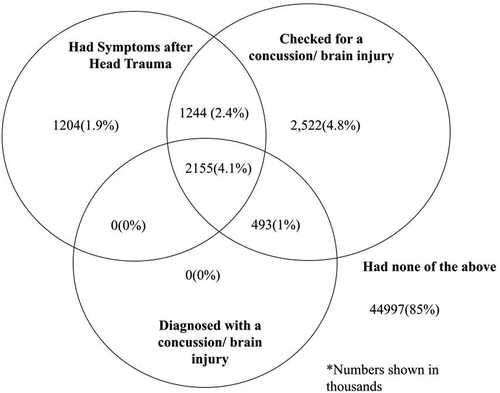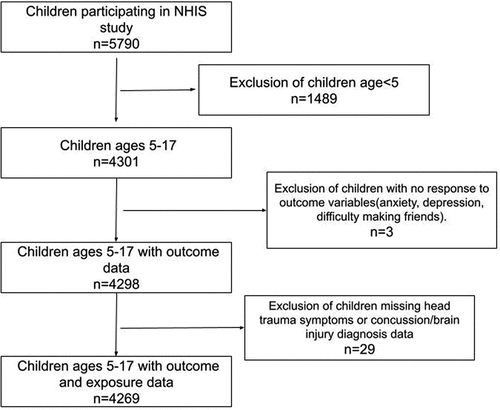Figures & data
Figure 1. Venn diagram showing the overlap of concussion/brain injury symptoms, check, and diagnosis in 2020 national health interview survey children ages 5–17.

Figure 2. Flow chart describing the selection of 2020 national health interview survey (NHIS) children included and excluded from the final analytic sample.

Table 1. Description of children ages 5–17 in the 2020 national health interview study (NHIS) with and without symptomatic head trauma or a diagnosed concussion/brain injury.
Table 2. Factors associated with being checked for a concussion/brain injury amongst 2020 national health interview survey children ages 5–17 with or without NHIS-reported previous symptomatic head trauma.
Table 3. Association of concussion/brain injury symptoms/diagnosis with mental/social well-being in 2020 national health interview survey children ages 5–17.
Table 4. Association of concussion/brain injury symptoms/diagnosis with high levels of mental/social distress in 2020 national health interview survey children ages 5–17.
Figure 3. Frequency of depressive symptoms, anxiety frequency, and level of difficulty making friends reported in 2020 national health interview survey children ages 5–17 with symptomatic head trauma, a diagnosed concussion/brain injury, or unaffected controls.

